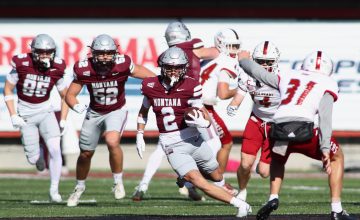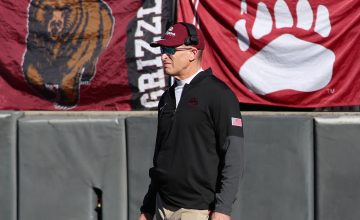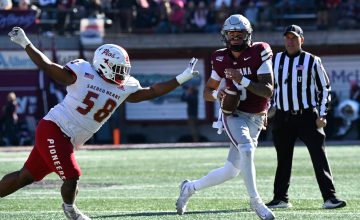Editor’s Note: Bill Lamberty, Montana State associate athletic director for media relations, and Colter Nuanez of Skyline Sports co-wrote this story.
First and foremost, Jim Sweeney was a son of Butte, America.
“He was all Butte,” says Phil Schneider, a Montana State offensive lineman under Sweeney’s tutelage during the 1957 and 1958 seasons. “Tough. He was tough. And funny.”
Dennis Erickson’s Hall of Fame coaching career nearly interlocks with Sweeney. Erickson played for Sweeney at Montana State, coached as an assistant with him at Washington State and Fresno State, and Erickson’s father Pink coached with Sweeney in Pullman, too.
Erickson sums his mentor up simply. “It was all Butte in him,” he said with a laugh. “He was tough. Everything you hear about him is true.”
Sweeney rose to great heights in the college football world as a head coach of three Division I programs over more than three decades. He spent 19 seasons between 1976 and 1996 leading Fresno State. He helped the Bulldogs’ program transition from the Pacific Coast Athletic Association to the Big West in 1980 and then into the Western Athletic Conference (WAC) in 1992. He led Fresno to eight conference championships, seven bowl games and five bowl game victories.
Sweeney finished his head coaching career with 201 victories, including a program record 144 that still stands as the most ever at Fresno State. He is one of 95 coaches in college football history, any division, to earn 200 career victories.
Although he spent most of his 32 seasons as a college head coach leading teams in the Pac 8 (Washington State, 1968-1975) and along the West Coast, his Montana roots ran deep. And some of his greatest influences, from guiding Montana State into the Big Sky Conference as a charter member to convincing one of the greatest kickers of all time to give that pursuit a try to growing an impressive coaching tree that impacted the Big Sky and college football for so many years, Sweeney is one of the godfathers of modern football in Montana.
The man from Butte has been a conduit for the heights many who began in the Treasure State, like Erickson, who is now a College Football Hall of Famer. several of the men from his coaching tree earned reputations as some of the game’s most memorable figures.
Many remember Sweeney, who passed away in 2013 at the age of 83, as one of those unforgettable coaches.
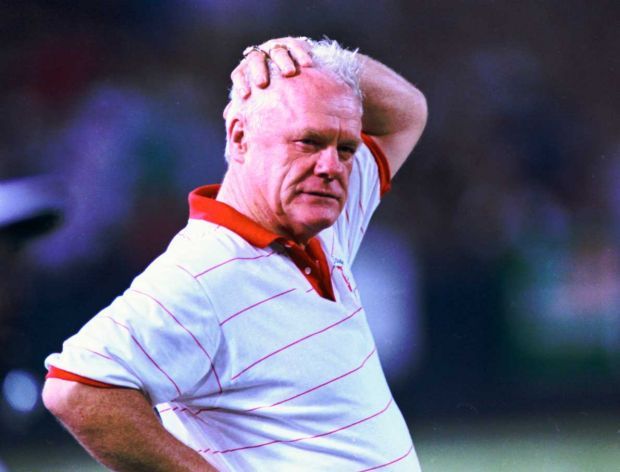
“Jim is a coaching legend. His legacy of success, both here and at other schools, is a very real part of our program’s tradition,” former Montana State head coach Mike Kramer (2000-2006) said in 2002 when Sweeney was inducted into Montana State’s Hall of Fame.
Bill Moos, who played at Washington State under Sweeney before rising through the ranks to become one of the most successful athletic directors in college sports, never forgot the influence Sweeney had on him. Moos was the athletic director at Montana when the Grizzlies won their first football national championship in 1995. Moos was the AD at Oregon (1995-2007) as the Ducks exploded into a West Coast titan. And Moos spent 2017 through 2021 as the athletic director at Nebraska.
“If Jim Sweeney had Woody Hayes’ (former Ohio State coach) players, there wouldn’t even be a debate here,” Moos said during a celebration of life for Sweeney in February of 2013, “because he’s the best football coach ever to coach in this great country, I believe.”
Born in Butte in 1929 to an Irish immigrant who worked as a hard-rock miner, Sweeney followed a stellar athletic career at Butte Central High with three standout seasons (1947-50) at the University of Portland, also a Catholic institution. His coaching career began at Columbia High School in Portland as an assistant in 1950, but the next season he joined the coaching staff at Butte Central. He worked as an assistant in 1951 before taking the reigns as head coach one year later.
In 1955, Sweeney became head coach at Flathead High in Kalispell. During his four seasons there the Braves won two Class AA State Championships and rolled up 18 consecutive victories. Four of his former players welcomed him upon his arrival at Bozeman in 1960 to coach Bobcat linemen.
Sweeney’s success at Flathead had already helped launch the most prolonged period of success in the history of the Montana State football program by the time he took over as head coach in 1963. Montana State had strung together seven straight winning seasons to that point, and Sweeney tacked on two more for a record that stood until 2009. His fingerprints remain visible on the Bobcat program today.
In the fall of 1960, though, he was tasked with developing line play for head coach Herb Agocs’ squads. Montana State featured some of the program’s greatest linemen ever that season. Tackle Bob Biastoch from Butte, is a Bobcat Athletics Hall of Famer, while his bookend Curt Farrier played spent five seasons with the Kansas City Chiefs. Sweeney also mentored All-America Joe Tiller, like Erickson a future collegiate coaching legend, and six other future all-league selections.
Sweeney displayed his penchant for toughness during his first season as Bobcat line coach.
“He had gone downtown to see (the movie) Spartacus, and the next day in practice we had a drill called Spartacus,” said Dick Hueth, then a sophomore offensive linemen. “I’ll never forget it.”
Sweeney created a chalk-lined square around three feet-by-three feet, and a player took his stance in a defensive position within the box. An offensive player got a running start with the defender fending off the play to tackle the oncoming ball carrier. Curt Farrier, at 6-foot-5 and 230 pounds, charged an offensive lineman and rammed into him.
“Farrier knocked him out of the square and knocked his teeth through his lower jaw,” Hueth continued. “There were two other (injuries) right after that, and then Marshall (Cook, the school’s athletic trainer) walked right into the middle (of the drill) and said, ‘That’s it. We’re done with this.’”
Hueth still marvels at Sweeney’s hard-edged enthusiasm. “He really was like a Roman gladiator in the Coliseum.”
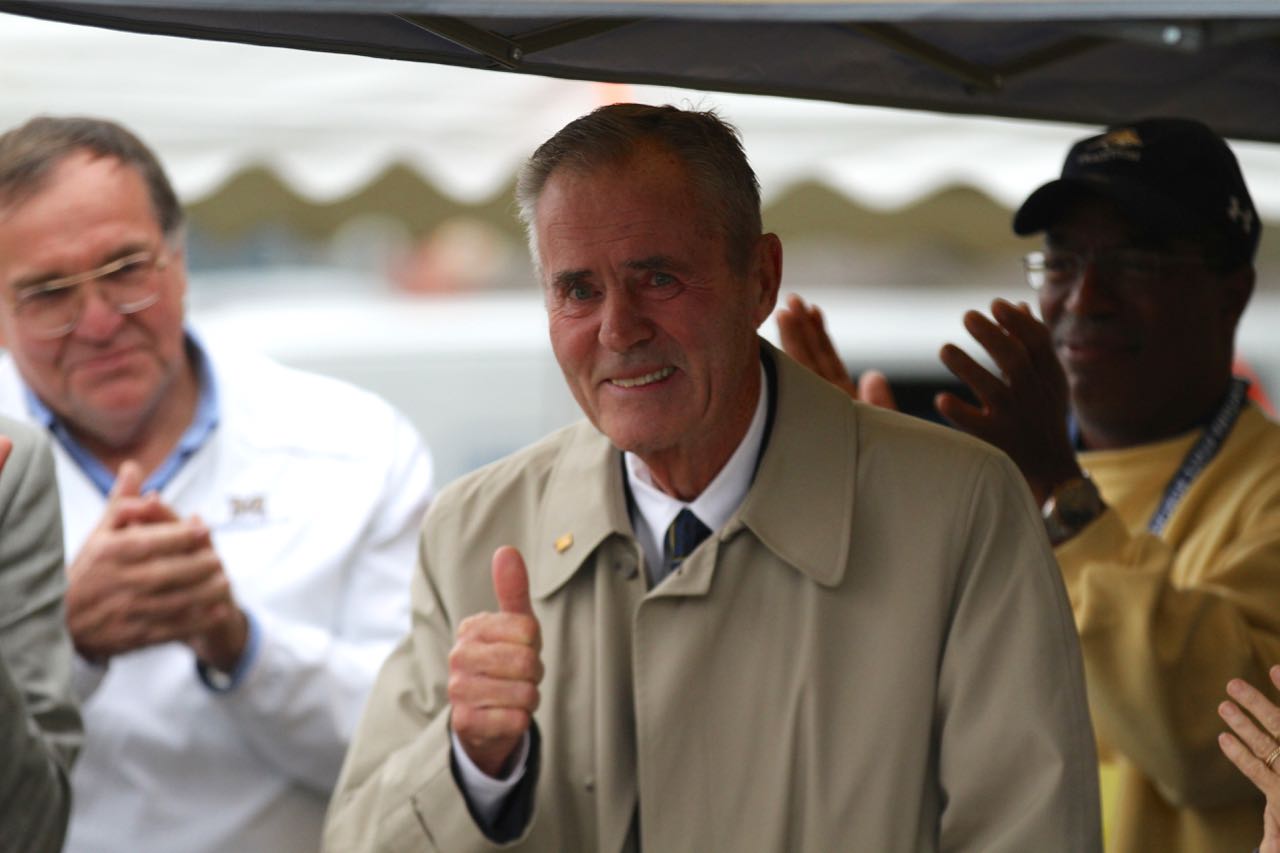
Herb Agocs, an assistant under Tony Storti beginning with Montana State’s 1956 national championship season, took the program’s reins in 1958. Two seasons later he brought Sweeney on board as line coach, and in 1963 upon Agocs’ retirement from his football coaching duties Sweeney was elevated by Director of Athletics Gene Bourdet to head football coach.
Two members of Sweeney’s final Flathead High team played for the Cats in 1963, including quarterback Ken Christison. A brilliant prep athlete, Christison threw for 855 yards as a part-time starter in 1962. That included touchdown passes of 80 yards against both Utah State and Fresno State. Christison had earned All-America honors in the javelin in the spring of 1963, and Sweeney promised to throw the ball more that fall to take advantage of Christison’s arm.
While that didn’t exactly pan out, the reason was an improved and complex ground game. Christison ran for 219 yards himself, averaging 5.4 yards a carry, while Dan Sundling starred at halfback. He set a school record with 672 rushing yards, and his 144 yards against the Grizzlies also broke a school record.
That was the first sign of Sweeney’s adaptive nature as a head coach, and part of that was a response to a changing environment. In 1963-64 Montana State University, the University of Montana, Idaho State University, Weber State University, and (on a limited basis at first) the University of Idaho formed the Big Sky Conference. Gonzaga University also joined, but had long since dropped its football program.
After a 7-3 campaign in its final season as an independent in 1962, Montana State finished Sweeney’s first campaign as head coach 6-3 overall, 2-1 in the Big Sky. In 1964 the Cats finished 7-4 but won all three Big Sky games to claim the Big Sky crown. Injuries wiped out the 1965 season (although the Cats beat Montana for the second straight season), but in 1966 Sweeney and MSU were ready to lay claim to the league’s first real dynasty.
“Sweeney was an intense son of a gun, but he had a great, great feel for blending talent – or lack of it – and emotion,” longtime Montana State trainer Chuck Karnop said years later. “He had an understanding of where a kid was in terms of his spirit, and where his heart was. A lot of people from Butte seem to grow up with that feel. They have a way of appreciating the whole person, and not necessarily just the athletic ability. Jim really had that knack.”
Montana State posted an 8-3 record in 1966 and 7-3 in 1967, winning the Big Sky with 4-0 records each season. The Bobcats had beaten Sacramento State in the 1964 Camellia Bowl, and earned another bid in 1966. The foe awaiting them in their second Camellia Bowl was San Diego State, the nation’s top-ranked small college team. With an offense constructed by head coach Don Coryell and a defense led by coordinator John Madden – both future NFL coaching legends – along with eight players that would be drafted a few short months later, the Aztecs beat Montana State 28-7.
Sweeney tinkered with his offense throughout his time at Montana State, landing on a “belly option” attack spearheaded by Erickson and tailback Don Hass because “he really wanted to run the ball and I couldn’t throw it at all,” Erickson said laughed.
At that point in his career, though, Erickson said X’s and O’s and schemes and offensive concepts were secondary to Sweeney in those years. “The biggest concept he relied on was toughness,” Erickson said. “We ran the football and he was one of the first guys running the I formation back in 1967 and ’68, but more than anything he wanted his teams to be tough.”

Sweeney is also part of a fateful decision to lure a Norwegian ski jumper from the hill to the gridiron, opening the door for one of the greatest careers by a kicker in football history.
In 1962, Jan Stenerud was fresh off a sixth-place finish at the Norwegian Junior National Ski Jumping Championship when a letter from Montana State arrived at his family’s home. Former MSU ski coach Bob Beck was offering a full-ride scholarship to come halfway across the globe.
As a sophomore at Montana State in 1964, Stenerud finished fourth at the NCAA National Championships in the ski jump, earning All-America honors in the process. Then his life took an unexpected twist.
The following spring, Stenerud was running the stairs at Gatton Field with his teammates. After the cardio session, MSU football player Dale Jackson talked Stenerud into cooling down by kicking a few footballs.
It so happened on that afternoon that MSU men’s basketball coach Roger Craft was taking his typical shortcut across Gatton Field back to Brick Breeden Fieldhouse on the Montana State campus. He witnessed the young Norwegian consistently kicking footballs from the opposite 40-yard line “out of the back of the end-zone and beyond.”
The next day, Craft went into Sweeney’s office.
“I said, ‘Jim, have you ever seen Jan Stenerud kick a football?’ and he kind of ignored things,” Craft said in 2016. “So I said, ‘You should get him because he could really be a great asset’. He shrugged his shoulders like we basketball coaches don’t know what the hell we are talking about.”
A few weeks later, Craft saw Stenerud running the Gatton stairs again. Sweeney and his team were also on the field that day, so Craft yelled at Stenerud to come down and show his stuff.
Stenerud was wearing loafers that afternoon, so he had to wear one of Sweeney’s waffle-soled coaching shoes.
“I said, ‘Jim, you are going to watch this guy kick the football’, so Jim lined them up in kicking formation,” Craft said. “The holder was on the hash mark of the 35-yard line. Jan put it right through the uprights. Jim said, ‘Let’s see that again’. So he did it again. Right then, Jim walked over to Jan and patted him on the rear and said, “We have pregame breakfast tomorrow morning at 10 o’clock.”
In that moment, a record-setting football career was born. In 1965, Stenerud forever etched himself in MSU lore and put his name on the national map. In Montana State’s annual rivalry game against the University of Montana, Stenerud hit a 59-yard field goal, the longest in college football history at the time.
By 1966, he was a star. That season, the Bobcats scored 50 touchdowns and won the Big Sky Conference title. Stenerud hit 11 field goals and 49 extra points in scoring an NCAA-record 82 points. He was a consensus All-America selection and was picked by the Atlanta Falcons in the NFL Draft. He’d been drafted by the Chiefs the year before and ultimately decided to play for Hank Strom’s Chiefs. By his fourth season, KC became just the second AFL team to win a fledgling football game known as the Super Bowl.
During his 18-year NFL career, Stenerud essentially wrote the record books. His 373 made field goals and 1,699 points were all-time records when he retired. He earned seven All-Pro selections and was named to four Pro Bowls. He played on the Kansas City Chiefs team that won Super Bowl IV and he’s a member of the Chiefs’, Green Bay Packers’ and Montana State Bobcats’ Hall of Fames. He was also inducted into the Montana Football Hall of Fame’s inaugural class in 2016.
“Sweeney got a hold of me, and Sweeney, he was a dominant individual,” Stenerud said. “He dominated every room he was in. He gave me the chance of a lifetime because I was a sideshow, a circus. I was the only guy on the team who couldn’t play football, didn’t even try to play football, couldn’t play football. He’d never had a guy who had just kicked. Instead of being the sideshow or distraction, he embraced this idea and it was absolutely great.
“I think about him almost every day in my life. There will never be another man like Jim Sweeney.”
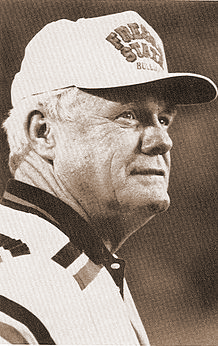
Sweeney’s five seasons at Montana State netted 31 wins, three of the first five Big Sky Conference championships ever won in football and a pair of Camellia Bowl appearances, including MSU’s lone bowl victory in 1964. Sweeney’s time at MSU also helped him influence men like Erickson, Tiller and Sonny Holland.
Erickson, who was a senior quarterback for the Bobcats in 1968 and an inductee into the Montana Football Hall of Fame in 2017, came to Bozeman to play for Sweeney. He went on to lead Miami to a pair of national championships and was inducted into the College Football Hall of Fame in 2019. Erickson worked for Sweeney at Fresno State and Washington State.
Tiller, an all-conference offensive lineman for the Bobcats after coming to Bozeman from Toledo, Ohio, played for Sweeney his senior season and coached for him four more. In 1971, when Sweeney was four years into his eight-year stretch leading Washington State, Tiller joined the Wazzu staff as the offensive line coach.
After spending nine seasons coaching in the Canadian Football League, Tiller returned to the college ranks as an assistant at Purdue from 1983 to 1986. By 1991 he was the head coach at Wyoming and by 1997 he was the head coach at Purdue. He led the Boilermakers to 10 bowl games, including the 2000 Rose Bowl, in his 12 seasons at the helm.
And Holland, himself a Butte product, stayed long enough in Bozeman to earn the reputation as the Greatest Bobcat of all time. There’s a statue out front of Bobcat Stadium in homage to “The Chief” after he helped guide MSU to the 1956 national championship as a player while leading the Bobcats to the 1976 as head coach 20 years later.
Erickson, Tiller and Holland all worked for Sweeney at multiple stops. Sweeney’s eight seasons at Washington State were more challenging than the rest of his largely charmed coaching career. The Cougars finished with a winning record just once: a 7-4 mark in 1972 that helped Wazzu finish with a No. 19 overall national ranking.
“He had come to Pullman from MSU where he had a really nice run of conference championship teams,” Kramer, who was recruited by Sweeney out of his native Colton, Washington to play at WSU, said years later on ESPN Radio. “The Cougars were sorely lacking in a lot of areas. But Sweeney brought in a brand of enthusiasm that is still around on the Palouse decades later. The way they celebrate college football in Pullman, that started with Sweeney.
“A lot of ways that I thought you had to act as a coach came from watching Coach Sweeney from afar. For example, at Washington State University, after every win, they would sing the Bobcat fight song. Not the Cougar fight song. The Bobcat fight song (laughs).”
After a 26-59 mark that included a 12-41 Pac 8 record, Sweeney resigned. The following season, he took over at Fresno State, helping build the Bulldog program into the envy of the rest of the small-school college football world.
From Dick Fry’s book “The Crimson and Gray” about Washington State football, it reads about Sweeney:
“Jim Sweeney’s coaching record at Washington State belies his popularity at the school. Sweeney posted an unexceptional 29-59-1 mark at WSU. Yet he could have owned the school — and most of the sportswriters on the Pacific Coast, if he’d wanted ‘em — because of a ready wit and Irish charm that usually disarmed his most severe critics.”
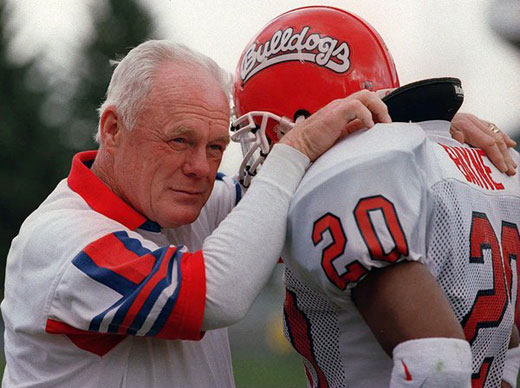
During his run at Fresno State, Sweeney earned six of his staggering 11 conference Coach of the Year awards. He helped the university establish itself among the landscape of competitive West Coast football schools.
“Coach Sweeney awakened our university and Central California to new possibilities and new dreams and he led the way,” former Fresno State president John Welty said during a celebration of life at Fresno State shortly after Sweeney’s passing in 2013.
“Coach Sweeney puts us on the national map and made Fresno State the gold standard for mid-major football,” added Tim DeRuyter, the head coach at Fresno State from 2012 until 2016 who is now the defensive coordinator at Texas Tech. “He made us the envy of everybody else out there.”
Sweeney led the Bulldogs to nine wins and an outright PCAA title in his second season in 1977. He spent the 1978 season with the Oakland Raiders in John Madden’s final season, and the 1979 season with the St. Louis Cardinals under Bud Wilkinson, who was fired before the season’s end.
Sweeney returned to Fresno State as head coach in 1980 for 17 seasons, compiling a 144–74–3 (.658) record and eight conference championships
By 1982, Fresno went 11-1, winning a second conference crown and winning the California Bowl for the first of four times Sweeney led the team to a victory in that particular post-season affair.
The Bulldogs went undefeated in conference play in 1985, 1988 and 1989, winning double-digit games and the California Bowl in each season. Sweeney also led Fresno State to the first two WAC titles ever and bowl appearances each year in 1992 and 1993.
“He understood what made a great football coach and a great leader,” standout Fresno State quarterback Trent Dilfer, the No. 6 overall pick in the 1994 NFL Draft and a Super Bowl champion in the pros, said at Sweeney’s celebration of life in 2013. “You get the most from the least and the best from the best, and I guarantee you that there’s guy 113 on the 1991 team, that I don’t remember his name, but Jim Sweeney got the most out of him.”
He retired from college coaching in 1996 after 32 years, with a combined record of 201 wins, 153 losses and four ties, including five bowl victories. He was named the Pacific Coast Athletic Association’s Coach of the Year on three separate occasions, the Big West Coach of the Year for both 1988 and 1989, and was a finalist for National Coach of the Year honors in 1989. He was inducted into the Fresno State Hall of Fame in 1992 and the Montana State Hall of Fame in 2002. At the conclusion of the 1996 football season, the field at Bulldog Stadium was renamed “Jim Sweeney Field” in his honor.
And now this season, Sweeney joins the illustrious group enshrined in the Montana Football Hall of Fame, so many of whom he helped pave the way for.
“Coach Sweeney, who led Kalispell to the Montana high school state championship over Helena High in 1958 to Montana State where he led the Bobcats to Big Sky titles to Pullman where he got the Cougars in contention to Fresno State, where he had such an outstanding career, to the NFL and back to Fresno State…what a great, outstanding contributor he was to football in the state of Montana, to the Big Sky Conference and around the country,” Kramer said. “He had as much influence as any coach the Big Sky Conference or the West has seen in college football.”



